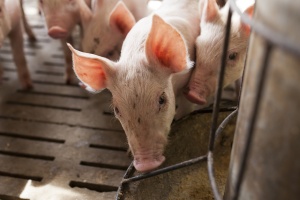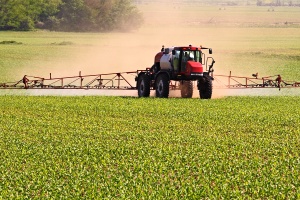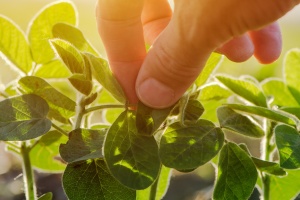THE GENETIC HISTORY OF OUR FOOD
Modern medicine, smart phones, household appliances—the world looks a lot different than it did a few hundred years ago. Smart phones help us navigate and connect with family and friends, modern medicine keeps us healthy and household appliances are safer and more convenient.
Just like other technologies, the way scientists and farmers breed plants has changed over the years.
BREEDING PLANTS IN THE PAST
Before modern methods, farmers could only selectively breed crops. When choosing what to plant next year, they would select the seeds from the best crops that produced the largest fruits and vegetables, grew the fastest and the easiest. Eventually, after many years and generations of crops, they were able to grow vegetables and fruits we know and love today. You might be surprised at what some of your favorite foods used to look like. For example, just through selective breeding and choosing the best seeds, today’s peaches are 64 times larger – but that took decades of selective breeding to accomplish.
GROWING FOOD TODAY
Today, farmers and agronomists still use selective breeding. However, now they have new biotechnology tools to help them grow food with specific traits, making crops more sustainable and better for the environment. Genetically modified organisms, or GMOs, are created by introducing desirable traits and DNA from other plant varieties. New traits are identified in nature, such as resistance to certain pests, and inserted into another seed. Unlike selective breeding, genetic modification is quicker and more accurate, ensuring only the desired gene is inserted. For you this means more sustainably grown food and more of what you love, year-round fresh produce.
ON THE FUTURE FARM
Looking ahead, many emerging technologies will continue to change the way farmers grow food. One of those future biotechnologies is gene editing. Scientists can editgenes that already exist in a plant without introducing any new DNA. Gene-editing can create foods that grow better and provide additional health benefits. The most promising gene editing tool is a DNA sequence found in nature called CRISPR (clustered regularly interspaced, short palindromic repeats).CRISPR’s built-in DNA-snipping and genetic GPS first locates the desired trait in the plant’s DNA, and then it cuts the DNA, so it can insert the new trait DNA.
Gene editing crops are already growing in the field and will soon be on grocery store shelves, helping reduce food waste with non-browning potatoes and mushrooms. Scientists are also working on gene edited peanuts that remove the allergen, so people with a peanut allergy can potentially enjoy gene-edited peanuts. Many citrus crops are in danger of extinction from a relentless disease, but gene editing may be able to save our oranges.










0 Comments